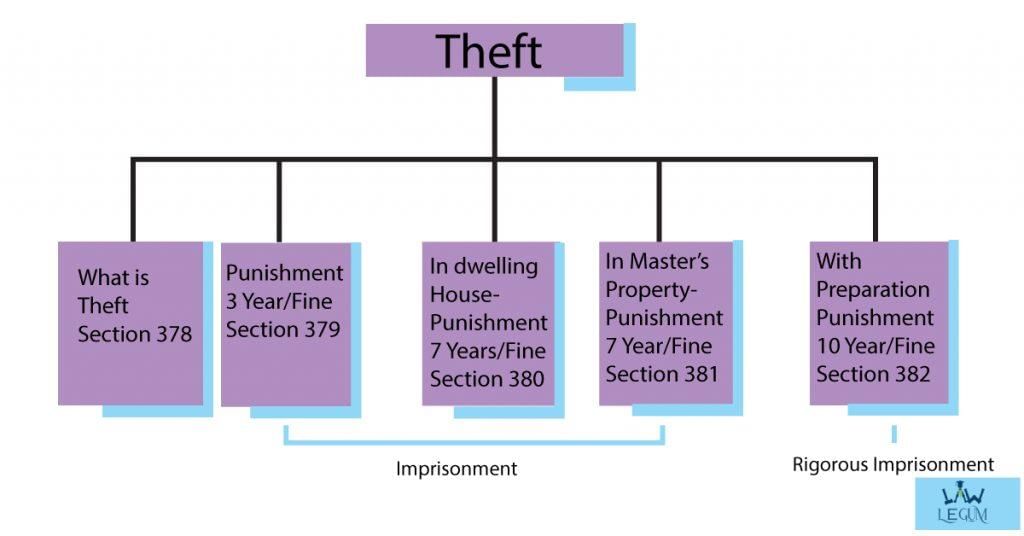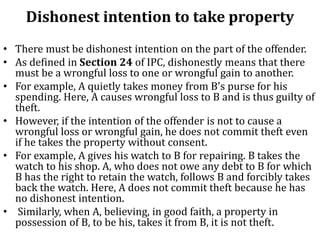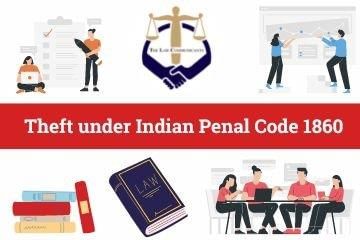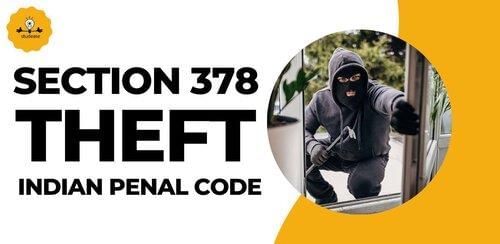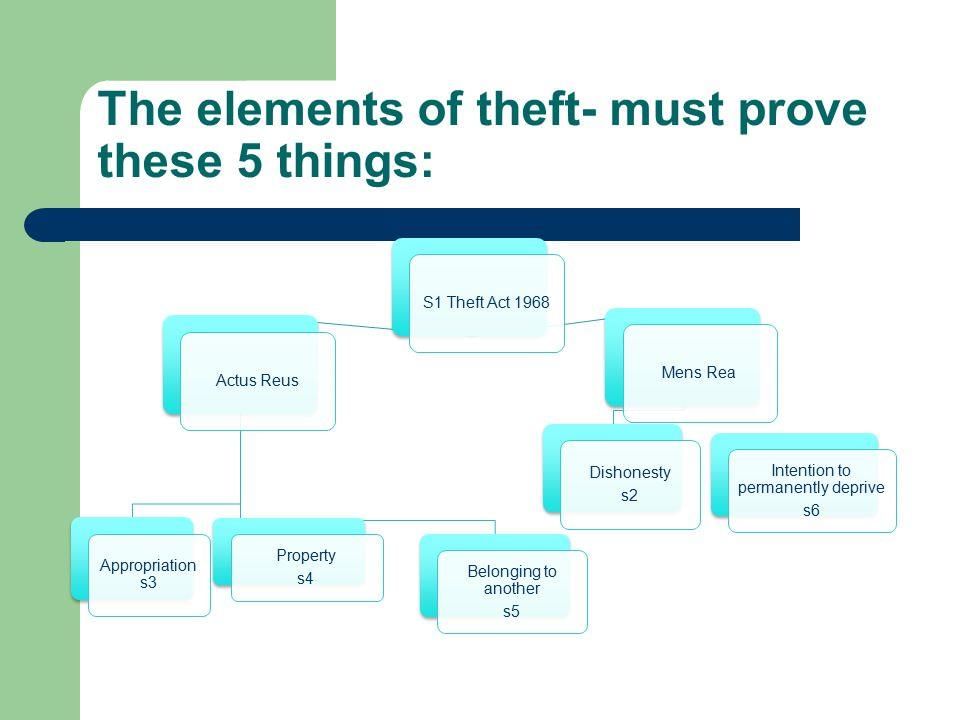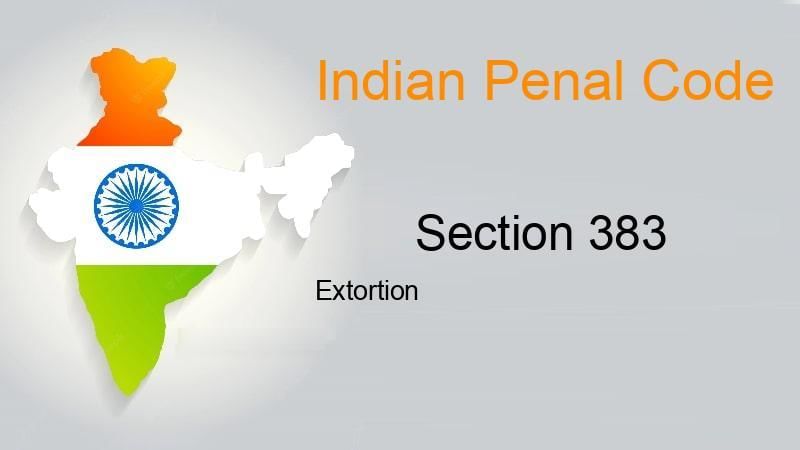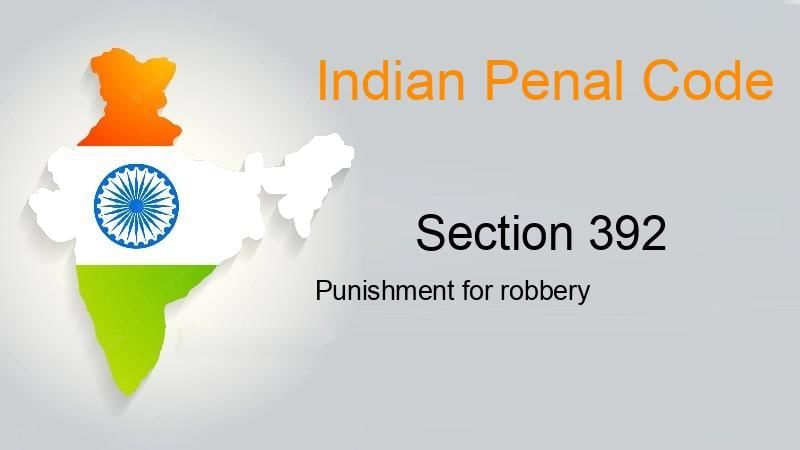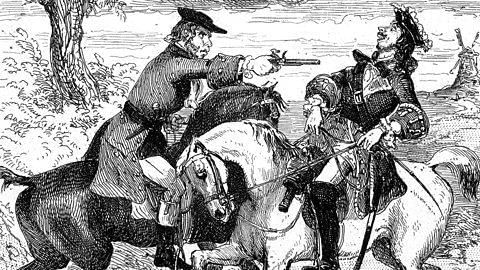|
Card: 1 / 50 |
Theft under the Indian Penal Code is defined in Section ___ and involves taking ___ property out of someone's possession without their consent. |
|
Card: 3 / 50 |
True or False: For theft to occur, the property must be in the possession of the person committing the theft. |
|
Card: 5 / 50 |
Fill in the blank: The key element of theft includes ___ intention, meaning the intent to cause wrongful gain to one person and wrongful loss to another. |
|
Card: 7 / 50 |
What is one key case law that illustrates the principle of theft related to temporary removal of property? |
|
Card: 10 / 50 |
Movable property refers to items that can be carried around; items permanently attached to the earth are considered immovable unless severed. |
|
Card: 11 / 50 |
True or False: The intention to cause permanent deprivation of property is necessary to establish theft. |
|
Card: 12 / 50 |
False; the absence of consent and the presence of dishonest intention are sufficient. |
|
Card: 13 / 50 |
According to Section 380 of the Indian Penal Code, what are the possible punishments for theft? |
|
Card: 15 / 50 |
Fill in the blank: If a person takes property from someone without their consent, it constitutes ___ under the Indian Penal Code. |
|
Card: 17 / 50 |
What must occur for theft to be considered complete according to the Indian Penal Code? |
|
Card: 19 / 50 |
True or False: Movement of property is not a necessary element in the commission of theft. |
|
Card: 25 / 50 |
Extortion involves putting a person in fear of injury to themselves or another person and inducing them to deliver ___ or ___. |
|
Card: 28 / 50 |
1. Intentionally putting a person in fear of injury. 2. Dishonest inducement to deliver property or valuables. 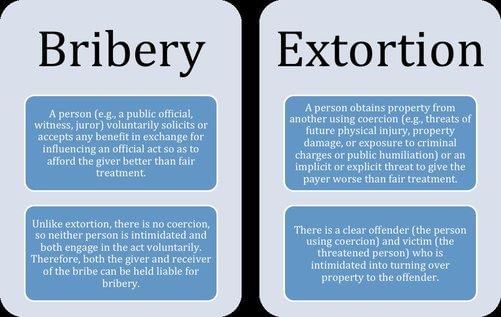 |
|
Card: 29 / 50 |
Fill in the blank: Punishment for extortion can include imprisonment of up to ___ years. |
|
Card: 31 / 50 |
True or False: The act of extortion can involve both movable and immovable property. |
|
Card: 33 / 50 |
What is the maximum punishment for extortion involving fear of death or grievous hurt? |
|
Card: 35 / 50 |
Complete the sentence: In the case of extortion, actions taken under fear are considered ___. |
|
Card: 37 / 50 |
True or False: The definition of robbery according to Section 390 of the IPC does not include extortion. |
|
Card: 40 / 50 |
Dishonest inducement is crucial as it involves persuading the victim to deliver property or valuables while under threat. 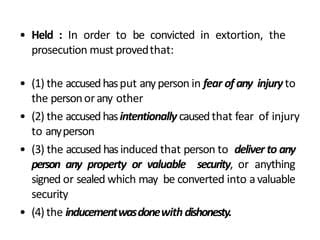 |
|
Card: 41 / 50 |
Robbery occurs when an offender causes or attempts to cause ___ to any person during the act of theft. |
|
Card: 44 / 50 |
False. Extortion becomes robbery when the offender instills fear of immediate death, injury, or wrongful restraint. 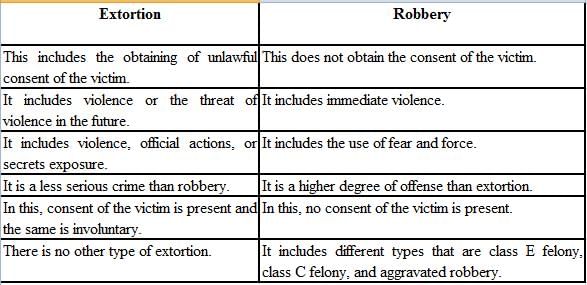 |
|
Card: 45 / 50 |
The punishment for robbery under Section 392 of the IPC can include rigorous imprisonment for up to ___ years. |
|
Card: 47 / 50 |
Fill in the blank: If robbery occurs on highways between sunset and sunrise, the punishment can extend up to ___ years. |
|
Card: 50 / 50 |
The offender must cause or attempt to cause fear of immediate death, injury, or wrongful restraint, or must actually cause such harm. 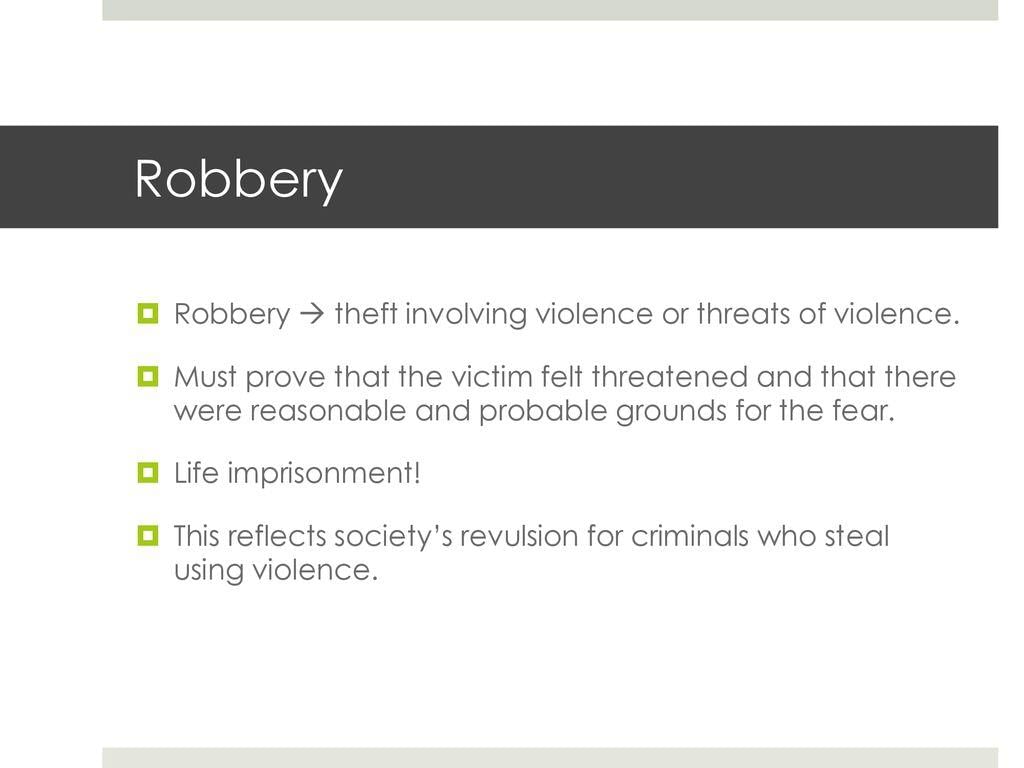 |




